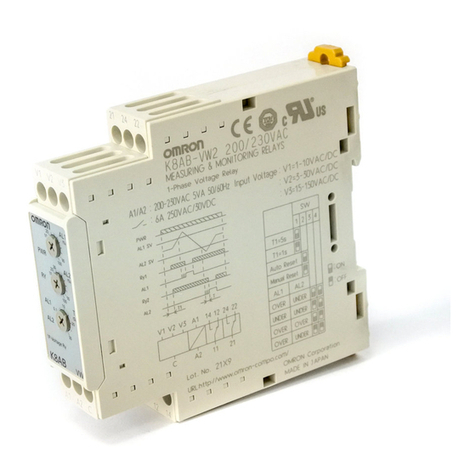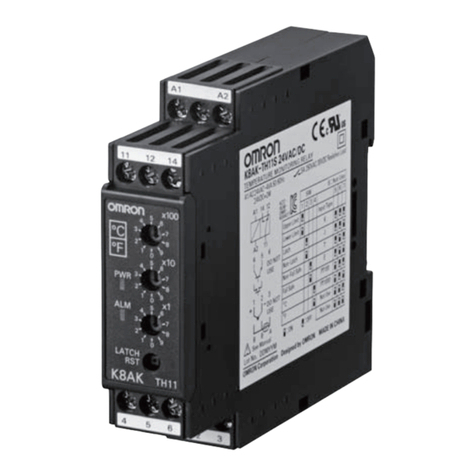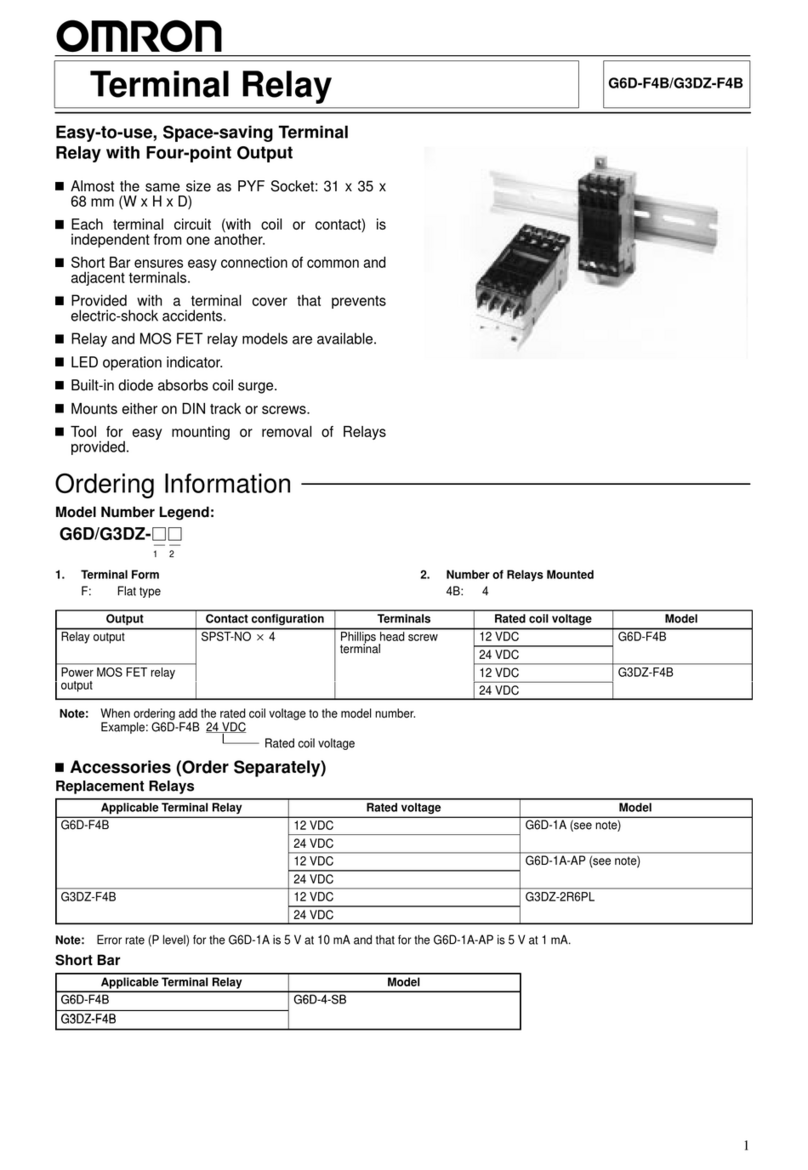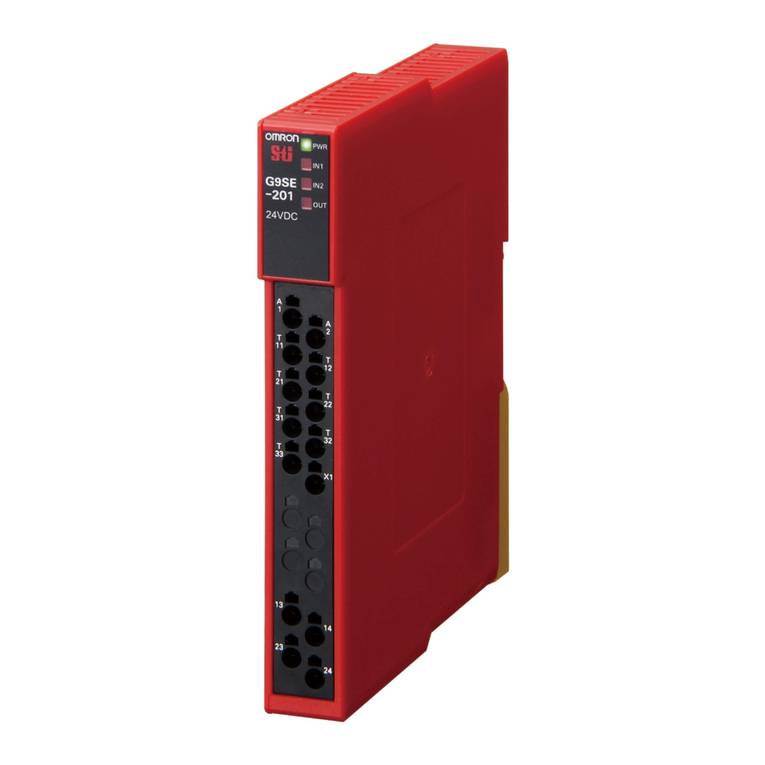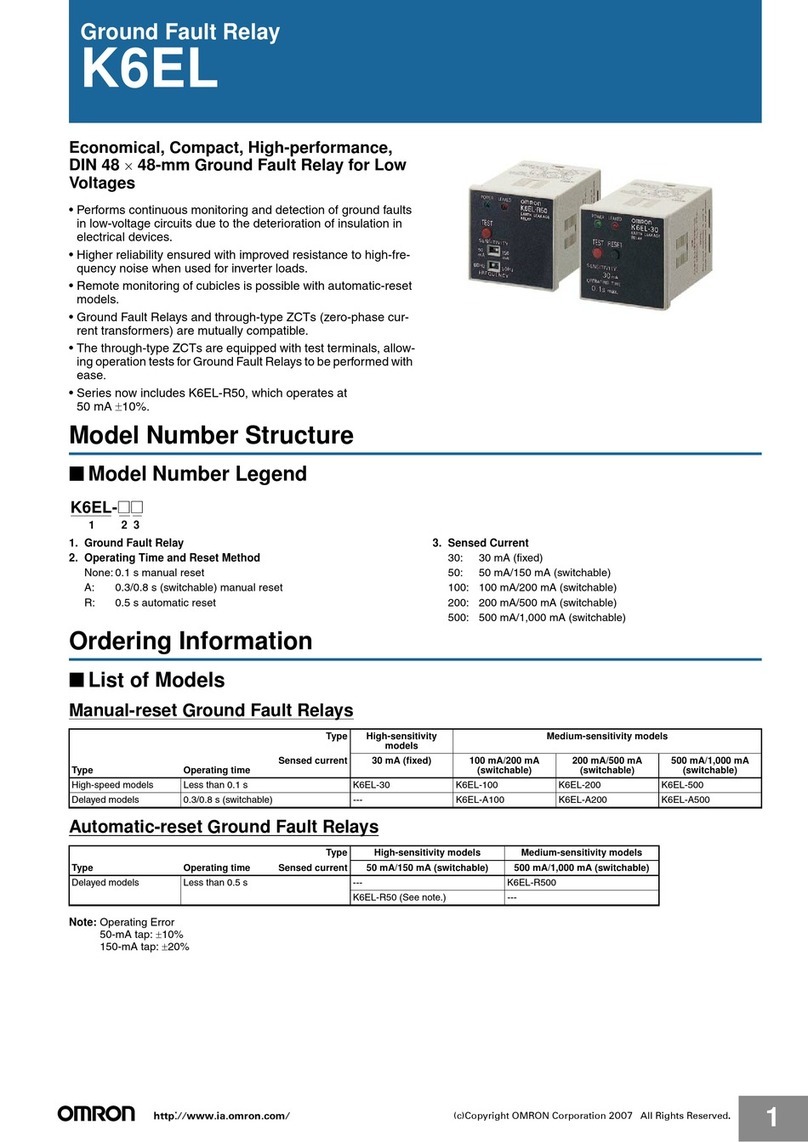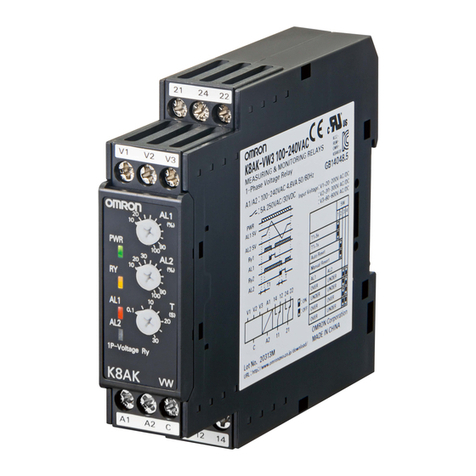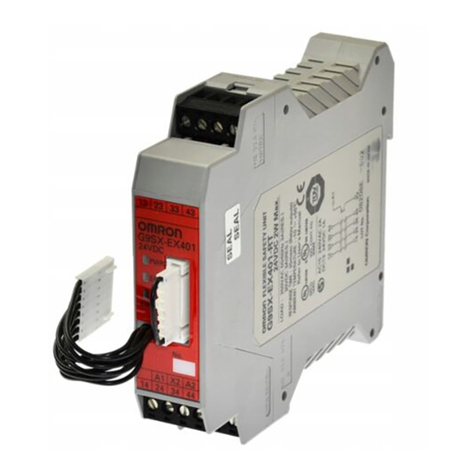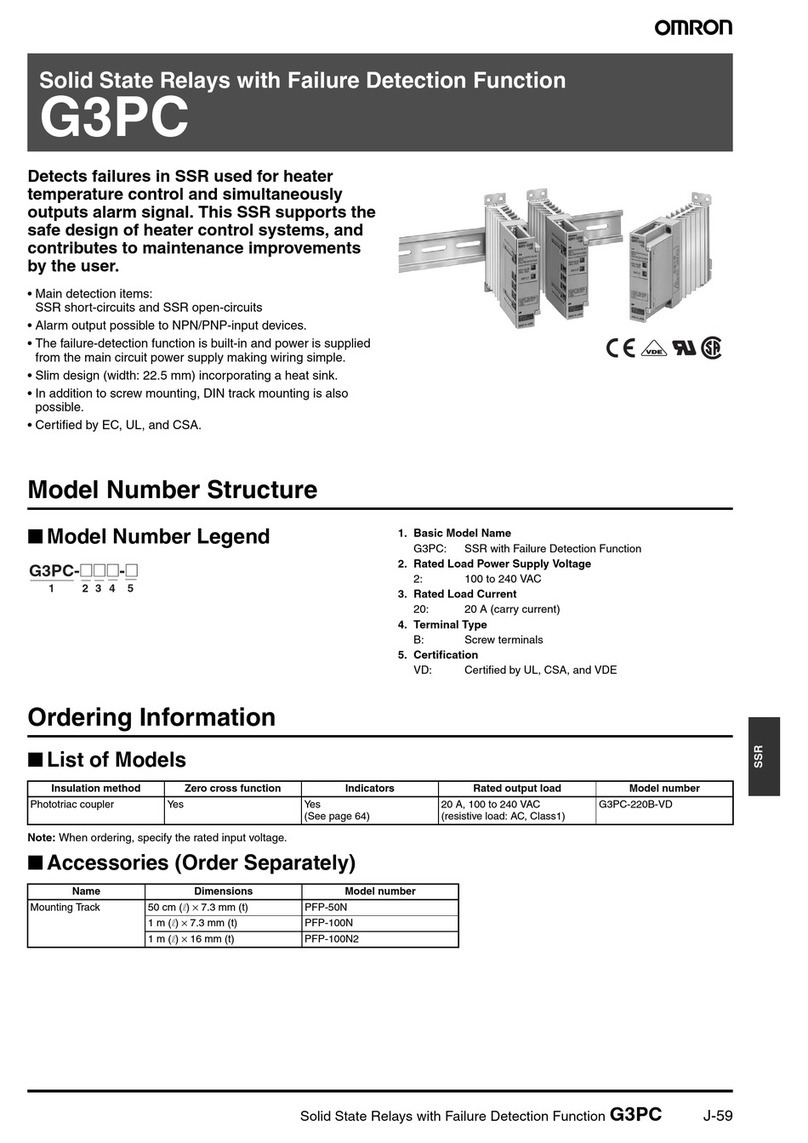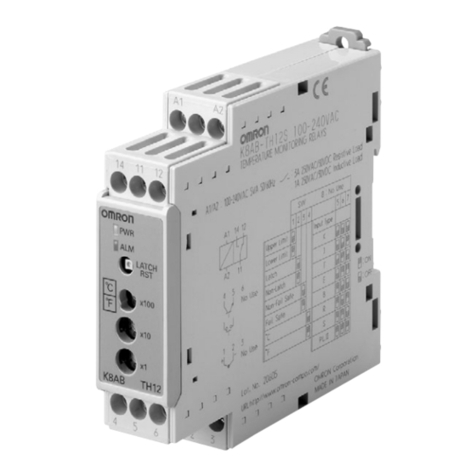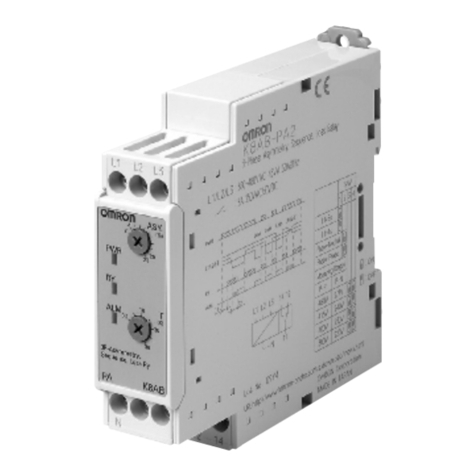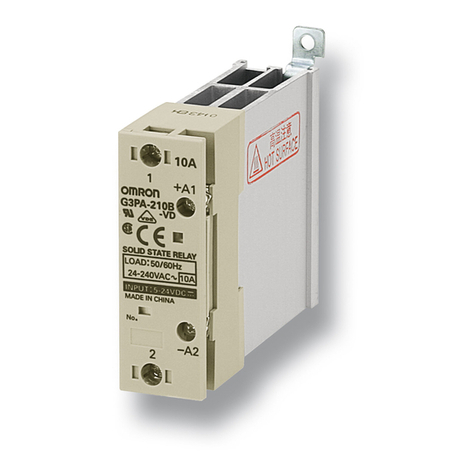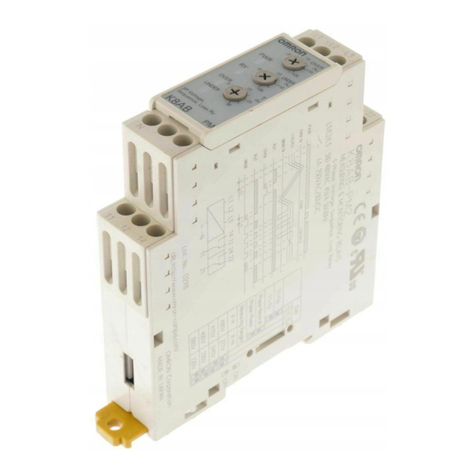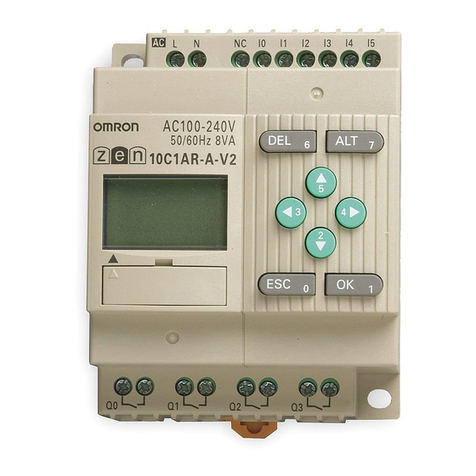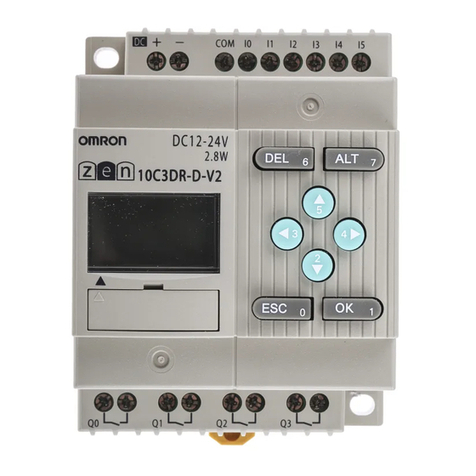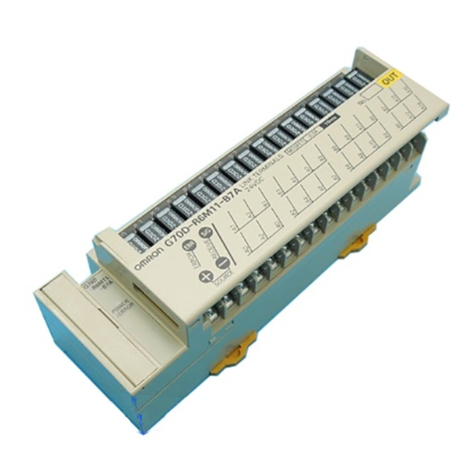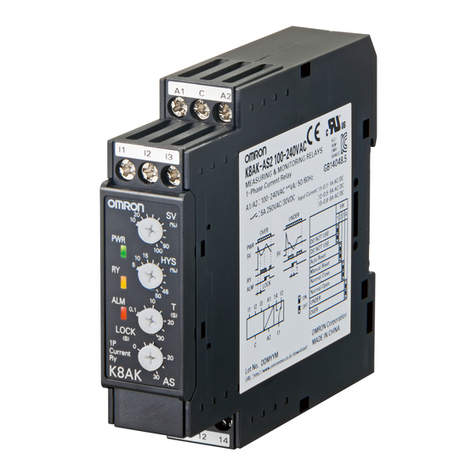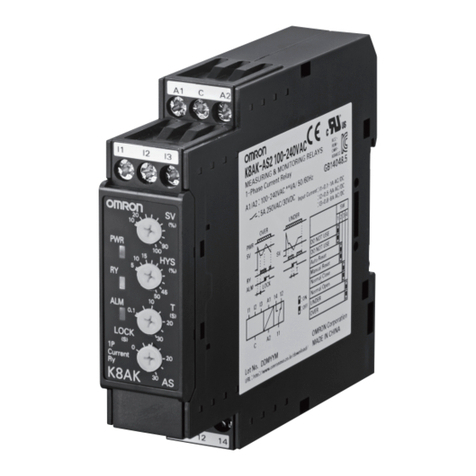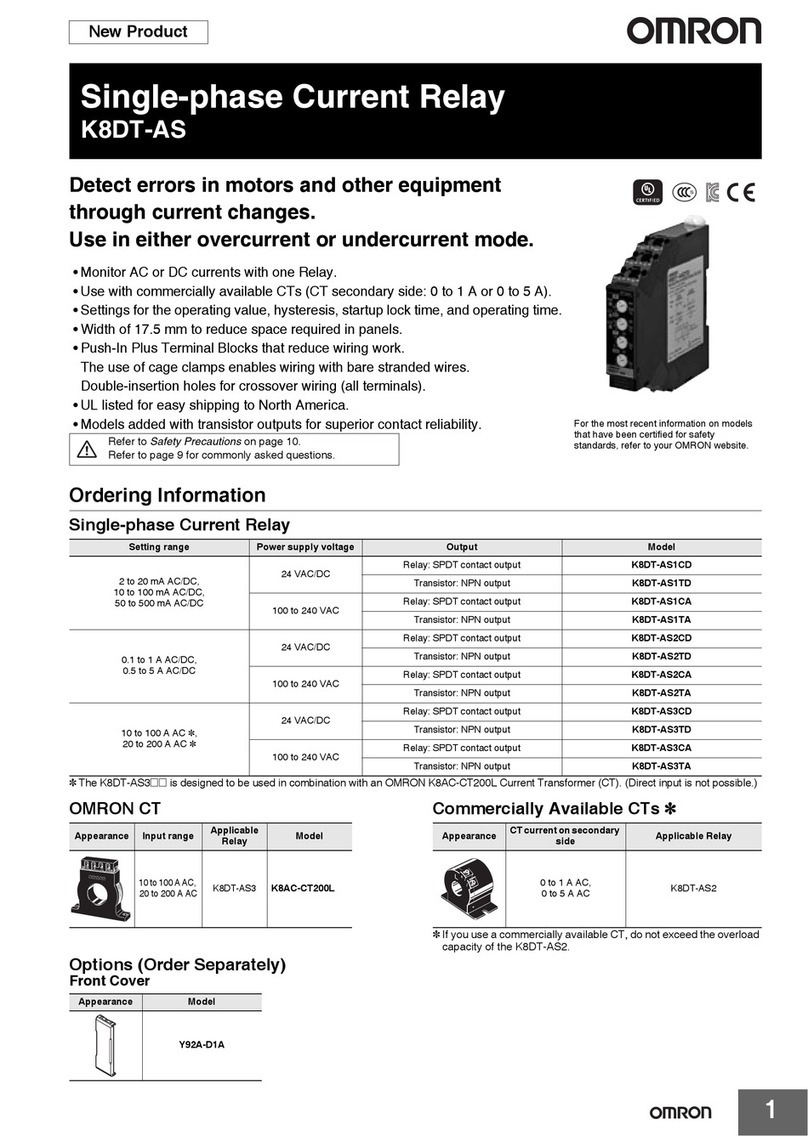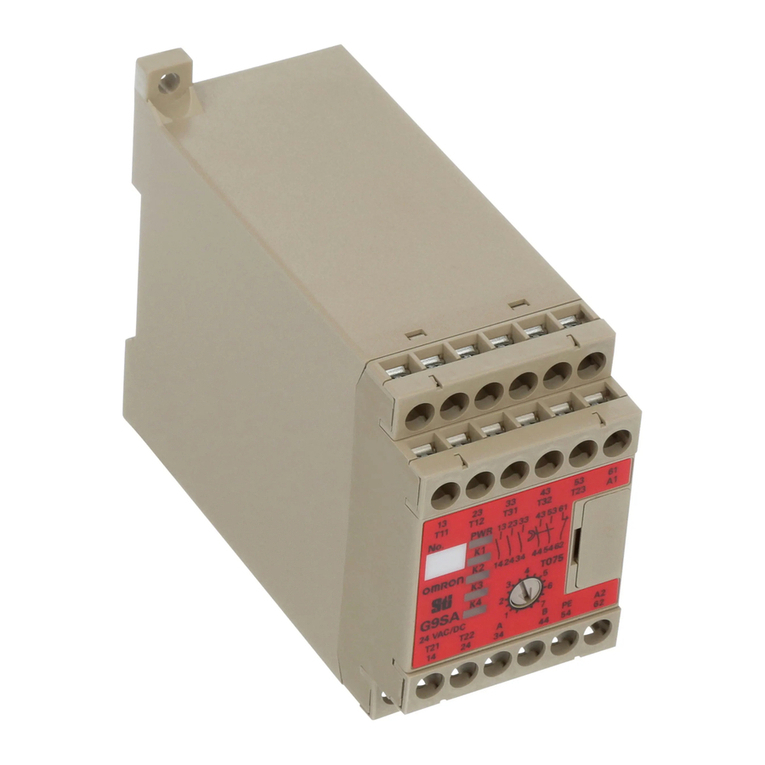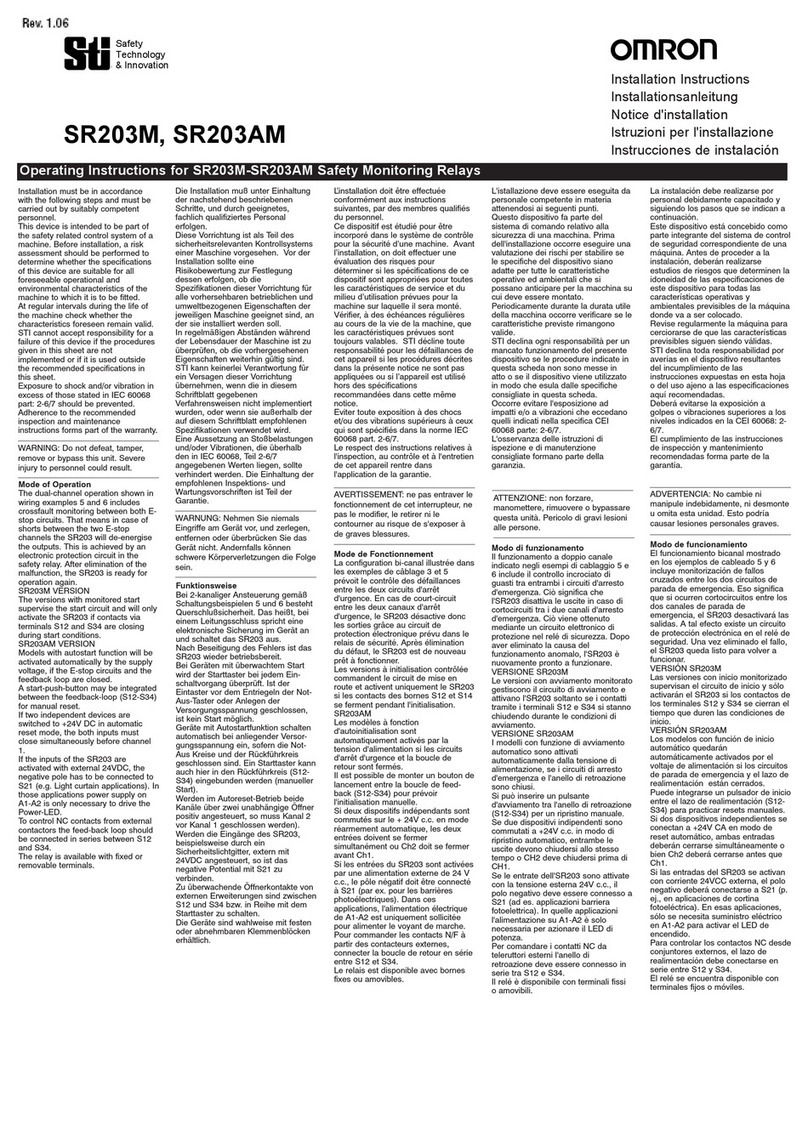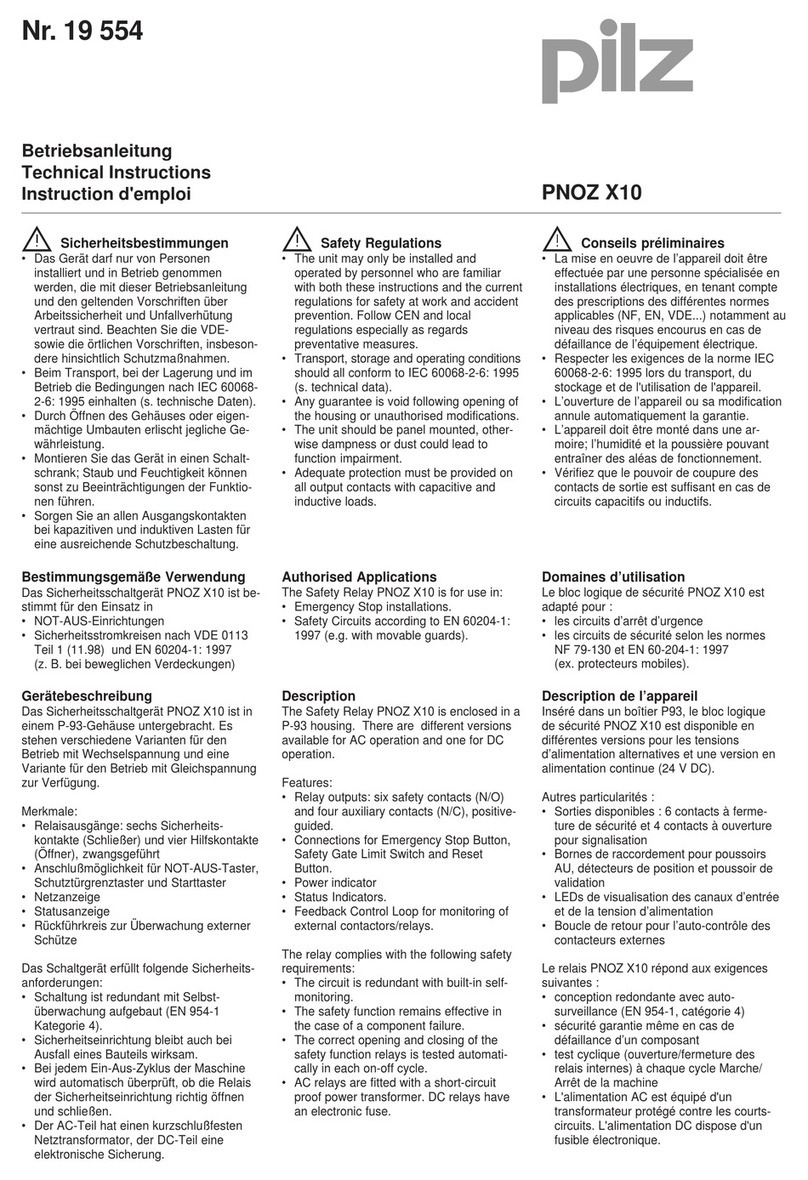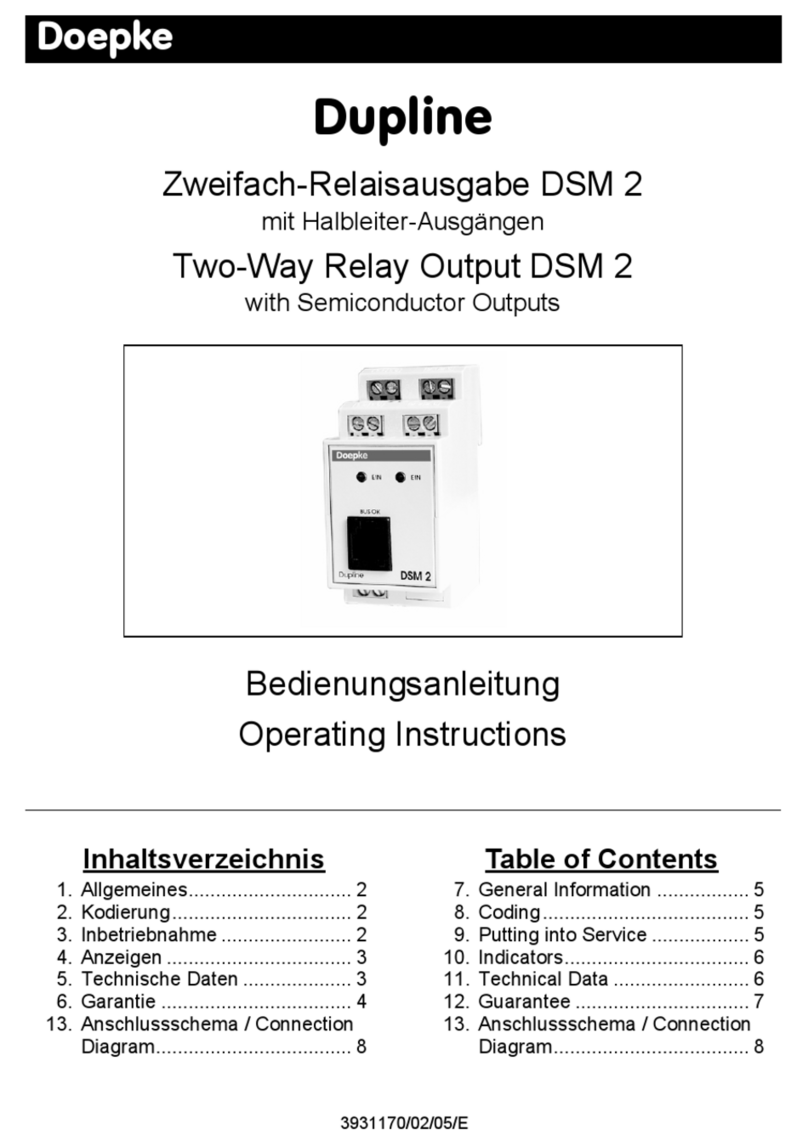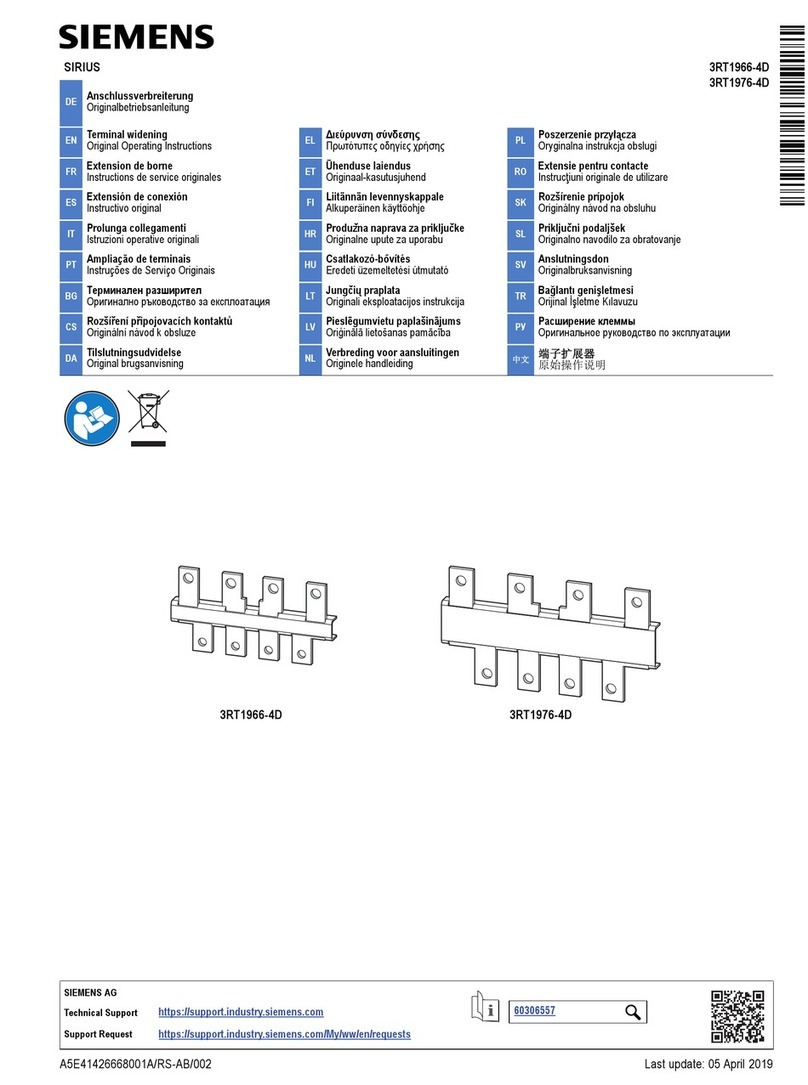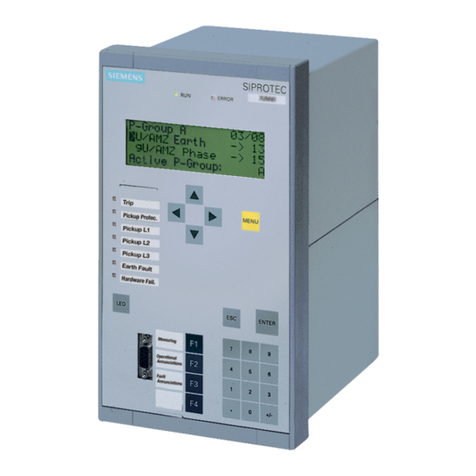
K8DT-AS
3
Ratings Specifications
Power supply voltage K8DT-AS@@D: 24 VAC 50/60 Hz, 24 VDC
K8DT-AS@@A: 100 to 240 VAC 50/60 Hz
Power consumption 24 VAC/DC: 1.8 VA/1 W max.
100 to 240 VAC: 2.5 VA max.
Rated insulation
voltage 600 VAC
Operating value
setting range (SV)
10% to 100% of the maximum value of the setting range
K8DT-AS1: 2 to 20 mA AC/DC
10 to 100 mA AC/DC
50 to 500 mA AC/DC
K8DT-AS2: 0.1 to 1 A AC/DC (Compatible with
commercially available CTs.)
0.5 to 5 A AC/DC (Compatible with
commercially available CTs.)
K8DT-AS3: When used with the OMRON CT
(K8AC-CT200L).
10 to 100 A AC
20 to 200 A AC
Operating value 100% operation at set value
Reset value setting
range (HYS) 5% to 50% of operating value
Reset method
Manual reset/automatic reset (switchable)
Note: Manual reset: Turn OFF power supply for
1 s or longer.
Operating time
setting range (T) 0.1 to 30 s
Startup lock time
setting range (LOCK)
0 to 30 s
(The startup lock timer starts when the input has
reached approximately 30% or more of the set value.)
Note:
Enabled only for overcurrent operation.
LED Indicators Power (PWR): Green, Output (OUT): Yellow,
Alarm outputs (ALM): Red
Input impedance Refer to Input Range on page 2.
Output form
Relay: SPDT contact output
Transistor: Open collector
Switchable between normally open and normally
closed with a DIP switch setting.
Output relay ratings
Rated load: 250 VAC 5 A or 30 VDC 5 A
(resistive load),
250 VAC 1 A (inductive load),
48 VDC 0.2 A (inductive load)
Minimum load: 5 VDC, 10 mA (reference values)
Mechanical life: 10 million operations min.
Electrical life: 5 A at 250 VAC or 30 VDC: 50,000
operations
3 A at 250 VAC or 30 VDC:100,000
operations
Transistor output
ratings
Contact form: SPST-NO (Open collector)
Rated voltage: 24 VDC (maximum voltage: 26.4 VDC)
Maximum current: 50 mA DC
Ambient operating
temperature 20 to 60°C (with no condensation or icing)
Storage temperature 25 to 65°C (with no condensation or icing)
Ambient operating
humidity 25% to 85% RH (with no condensation)
Storage humidity 25% to 85% RH (with no condensation)
Altitude 2,000 m max.
Applicable wires Stranded wires, solid wires, or ferrules
Applicable wire size 0.25 to 1.5 mm2(AWG24 to AWG16)
Wire insertion force 8 N max. for AWG20 wire
Screwdriver
insertion force 15 N max.
Wire stripping length 8 mm
Ferrule length 8 mm
Current capacity 10 A (per pole)
Number of insertions
50 times
Case color N1.5
Case material PC, UL 94 V-0
Weight Approx. 100 g
Mounting Mounts to DIN Track, or screw mounting
Dimensions 17.5 90 90 mm (WHD)
Allowable operating
voltage range 85% to 110% of power supply voltage
Allowable operating
frequency range 50/60 Hz 5 Hz
Input frequency range
K8DT-AS1 and K8DT-AS2:DC input or AC input
(45 to 65 Hz)
K8DT-AS3: AC input (45 to 65 Hz)
Overload capacity
K8DT-AS1 and K8DT-AS2:
Continuous input at 120% of
maximum input, 1 s at 150%
K8DT-AS3:Continuous input at 120%, 30 s at
200%, and 1 s at 600% with an
OMRON CT (K8AC-CT200L)
Note: Overload capacity of primary side of CT.
Repeat error
Operating
value
0.5% full scale (at 25C and 65% humidity, rated
power supply voltage)
Operating
time
50 ms (at 25C and 65% humidity, rated power
supply voltage)
Applicable
standards
Conforming
standards
EN 60947-5-1
Installation environment (pollution level 2,
Overvoltage category III)
EMC EN 60947-5-1
Safety
standards
UL 60947-5-1 (Listing), Korean Radio Waves Act
(Act 10564), CCC (GB14048.5)
Insulation resistance
20 Mmin.
Between external terminals and case
Between power supply terminals and input
terminals
Between power supply terminals and output
terminals
Between input terminals and output terminals
Dielectric strength
2,000 VAC for one minute
Between external terminals and case
Between power supply terminals and input
terminals
Between power supply terminals and output
terminals
Between input terminals and output terminals
Impulse withstand
voltage
6 kV (between live terminals and exposed,
non-charged metal parts)
Noise immunity
Square-wave noise of 1-s/100-ns pulse width
with 1-ns rise time
100 to 240 VAC: 1,500 V power supply terminal
common/normal mode
24 VAC: 1,500 V power supply terminal common/
normal mode
24 VDC: 480 V power supply terminal common
Vibration resistance
Frequency 10 to 55 Hz, 0.35-mm single
amplitude, acceleration 50 m/s2
10 sweeps of 5 min each in X, Y, and Z directions
Shock resistance
100 m/s
2
, 3 times each in 6 directions along 3 axes
Degree of protection Terminals: IP20
